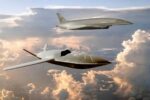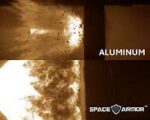Cummings Aerospace has announced a successful flight test of its Hellhound S3 loitering munition demonstrator at the Eglin Air Force Base Test Range in Florida. The prototype achieved a controlled flight to a distance of 30 kilometers using autonomous waypoint navigation. Designed for modularity and low-cost production via additive manufacturing, the Hellhound S3 aims to deliver precision strike capabilities beyond 60 kilometers — potentially offering U.S. and allied forces a new tier of scalable loitering munitions.
Flight Test Confirms Key Performance Benchmarks
The recent test validated several critical performance parameters of the Hellhound S3 demonstrator. According to Cummings Aerospace’s official release and reporting by 3D Printing Industry, the system executed an autonomous mission profile reaching a range of 30 kilometers while maintaining stable flight dynamics and telemetry integrity. The vehicle was launched from a ground-based rail launcher and followed pre-programmed GPS waypoints before safely terminating its flight.
This milestone confirms that the airframe design — produced entirely via additive manufacturing — can withstand aerodynamic loads over extended ranges. The company emphasized that this is an early step toward achieving its target operational range exceeding 60 kilometers with future propulsion upgrades.
Modular Design Philosophy Enables Rapid Prototyping
The Hellhound S3 is part of Cummings Aerospace’s broader push into modular unmanned systems tailored for rapid development cycles. The current demonstrator is constructed using high-strength polymer composites fabricated through industrial-grade additive manufacturing (AM) processes. This approach allows for quick iteration on airframe geometry, internal payload bays, and propulsion configurations without retooling traditional production lines.
Key features of the design include:
- Modular payload bay: Configurable for kinetic warheads or ISR sensors
- Autonomous navigation: GPS waypoint routing with onboard flight control
- Digital twin integration: AM-enabled CAD-to-flight workflow
- Low-cost fabrication: Targeted at expendable munition price points
The use of AM also supports distributed manufacturing concepts — enabling forward-deployed units or regional partners to produce components closer to point-of-use under license or via digital blueprints.
Aiming for Tactical Deep Strike Role in Contested Environments
Cummings envisions the final Hellhound variant as a lightweight tactical loitering munition capable of engaging time-sensitive targets at standoff distances beyond traditional artillery or short-range drones. With an intended range exceeding 60 kilometers (and potentially up to ~80 km depending on payload), it would fill a niche between tube-launched FPV drones (~10–20 km) and larger Group 3 UAVs like Switchblade 600 (~40+ km).
This positions it as an ideal candidate for suppression-of-enemy-air-defenses (SEAD), targeting mobile command posts or radar systems deep behind frontlines — especially when paired with ISR assets feeding real-time coordinates.
The company has not disclosed propulsion specifics but noted that future variants will incorporate enhanced powerplants and possibly multi-mode guidance (e.g., EO/IR terminal seekers). Warhead options remain under development but are expected to include shaped charges or fragmentation types optimized against light armor or personnel concentrations.
Additive Manufacturing as Strategic Enabler
The Hellhound program exemplifies how AM can compress development timelines while enabling bespoke designs tuned for mission-specific roles. According to CEO Sheila Cummings, “The convergence of digital engineering and advanced manufacturing allows us to rapidly iterate designs from concept through flight testing.”
This agility is particularly relevant given shifting U.S. DoD priorities toward attritable systems that can be deployed en masse without prohibitive cost burdens. In contested logistics environments — such as Indo-Pacific island chains or Eastern European forward bases — being able to print parts locally could drastically reduce resupply timelines.
No Current Procurement Program Yet—but Potential Alignments Exist
As of mid-2024, there is no formal U.S. Army or DoD acquisition program tied directly to Hellhound S3; however, several initiatives could align with its capabilities:
- Lethal Miniature Aerial Munition System (LMAMS): While currently dominated by AeroVironment’s Switchblade family, future increments may seek longer-range options.
- xTechSearch / DIU / SOFWERX pathways: These innovation channels often fund rapid prototyping efforts like Hellhound under Other Transaction Authority (OTA).
- Tactical Intelligence Targeting Access Node (TITAN): As part of Joint All-Domain Command & Control (JADC2), TITAN nodes could benefit from organic long-range strike assets like Hellhound integrated into their sensor-to-shooter loop.
Cummings Aerospace has not confirmed whether it will pursue formal downselection into any existing programs but indicated ongoing discussions with multiple defense stakeholders regarding operational requirements and integration paths.
Synthetic Training & Digital Twins Underpin Development Pipeline
An important enabler behind the rapid progress of the Hellhound demonstrator is Cummings’ use of synthetic environments and digital twins throughout its engineering pipeline. By simulating aerodynamic performance, thermal loads, control surface behavior, and mission profiles in software before committing to physical builds, the company reduces risk while accelerating iteration cycles.
This approach mirrors broader trends across defense OEMs seeking faster time-to-field without sacrificing reliability — particularly important when developing expendable platforms where unit cost must remain low despite sophisticated functionality.
Outlook: Toward Fieldable Precision Loitering Munitions at Scale?
If future tests validate extended range claims beyond 60 kilometers alongside reliable terminal guidance accuracy (<5 m CEP), Hellhound could emerge as a disruptive capability in both peer-conflict scenarios and irregular warfare contexts. Its modularity makes it adaptable across mission sets — from ISR-strike fusion against HVTs to swarm saturation tactics against fixed installations.
The key question remains whether U.S. procurement channels will embrace such digitally-native platforms outside traditional primes — especially given increasing interest in “attritable autonomy” under Replicator Initiative-type frameworks aimed at fielding thousands of low-cost systems rapidly by FY2025–26.










